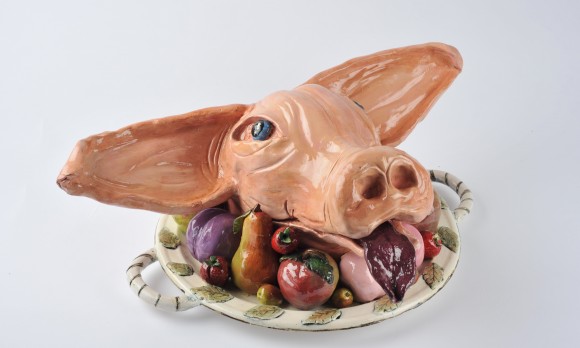Koestler Trust
Figen Gunes visits the Koestler Trust to find art inspiring inmates
Koestler Trust, the oldest prison art charity, has started two life-changing mentoring schemes with the aim of helping prisoners find volunteer and permanent jobs.
The Gateway Mentoring and Scholarship Mentoring programmes were designed after the charity’s staff acknowledged the difficulties of finding jobs for offenders.
Prisoners can apply to be matched with a mentor who will work with them on a one-to-one basis to identify their artistic goals, for example applying to college, creating new work, building their confidence or accessing local arts resources and receive support to achieve them.
Under the new Gateway Mentoring pathway programme, applicants need to be committed to developing their artwork. They will get up to seven mentoring sessions. But Scholarship Mentoring is designed to support Koestler Award-winners who have created a body of work and who would like to further develop their practice, or expand their arts knowledge, in the community or in custody.
Koestler mentors are experienced artists, writers, producers and craftspeople who have received special training to provide support to someone who has been involved in the criminal justice system.
So far the charity has offered volunteer positions in their west London office to women prisoners during the day. They also run a guaranteed interview scheme: if someone who has been in prison in the last two years fulfills some essential criteria they are guaranteed an interview.
Plus, some of their office staff are former inmates. One ex-offender employee who prepares artwork for judging – who wished to be anonymous – shared his experience of getting employment. He urged ex-offenders to volunteer for a charity they believe in to form a good relationship which may lead into some kind of employment: “My experience of gaining employment was I believe very different to most. I was very lucky to have already had a relationship with the Koestler as an ex-mentee, and timing played an important role also. I had just graduated with a good grade from a good school when the position became available.
“The most common way I have seen fellow ex-offenders gain employment is when they have already formed a fairly strong relationship with the hiring organisation, and it’s almost always been within either youth work or in the charity sector where their experiences are embraced that they have found paid work,” he says.
The Koestler Trust trained seven ex-offenders to be invigilators in last year’s exhibition at London’s South Bank to raise awareness of the difficulties facing jobseekers with a criminal record.
“Our invigilators had interesting additional insight to share with visitors as they had left prisons recently,” says Fiona Curran, director of art at the Koestler Trust. “They run tours about the background of artworks exhibited during the show. It made the visits very worthwhile. We were amazed how well it all went. We have worked with prisoners to curate the exhibition before but this was the first time having them as invigilators. We want to run it again in 2014. We were really impressed with it. Some of them have now got paid employment. Reference letters were given to help them,” she adds.
With the slogan “Creative energy exploding behind bars”, the historic Koestler Trust runs an annual exhibition of artwork sent in by prisoners to channel offenders’ energies to positive ends. They also sell artwork in exhibitions and give 25 per cent of the selling price to Victim Support and 50 per cent to the artists.
The most common themes in the artworks is wild animals: wolves, tigers and eagles, according to Curran. She says they can be taken as symbols of freedom and power. This year Olympic rower and gold medal winner Katherine Grainger will be a judge in this year’s theme category awards. She chose the theme to be “dreams”.















Write Your Comment